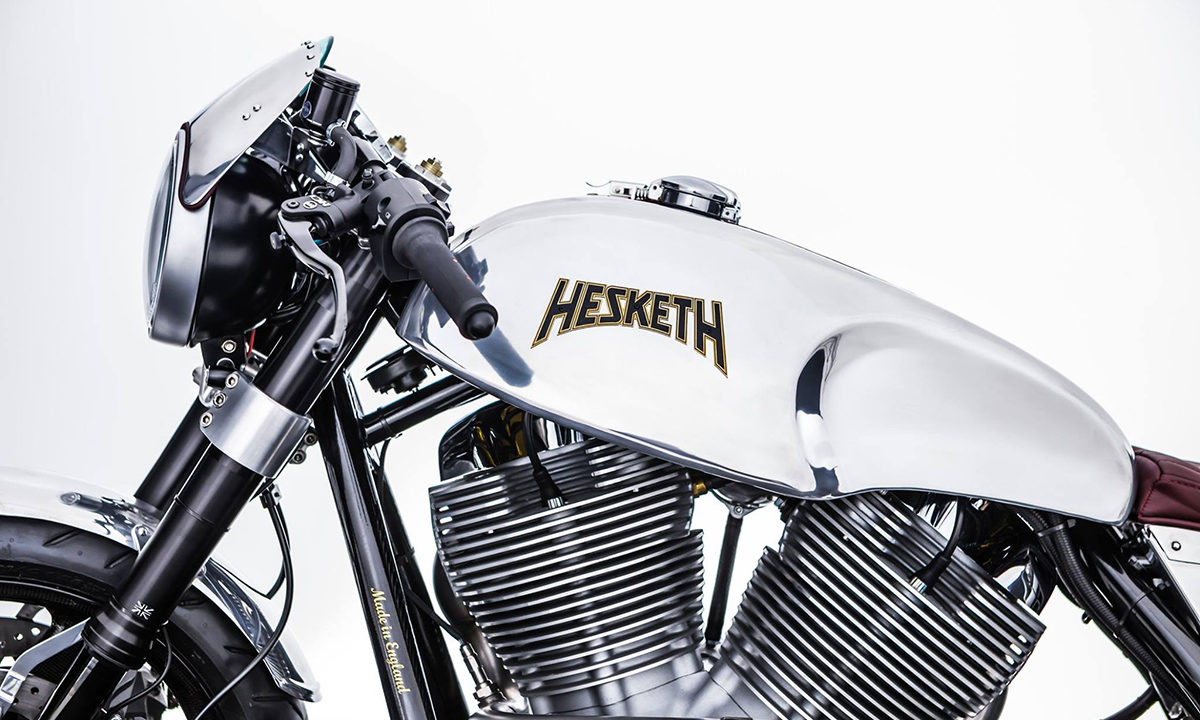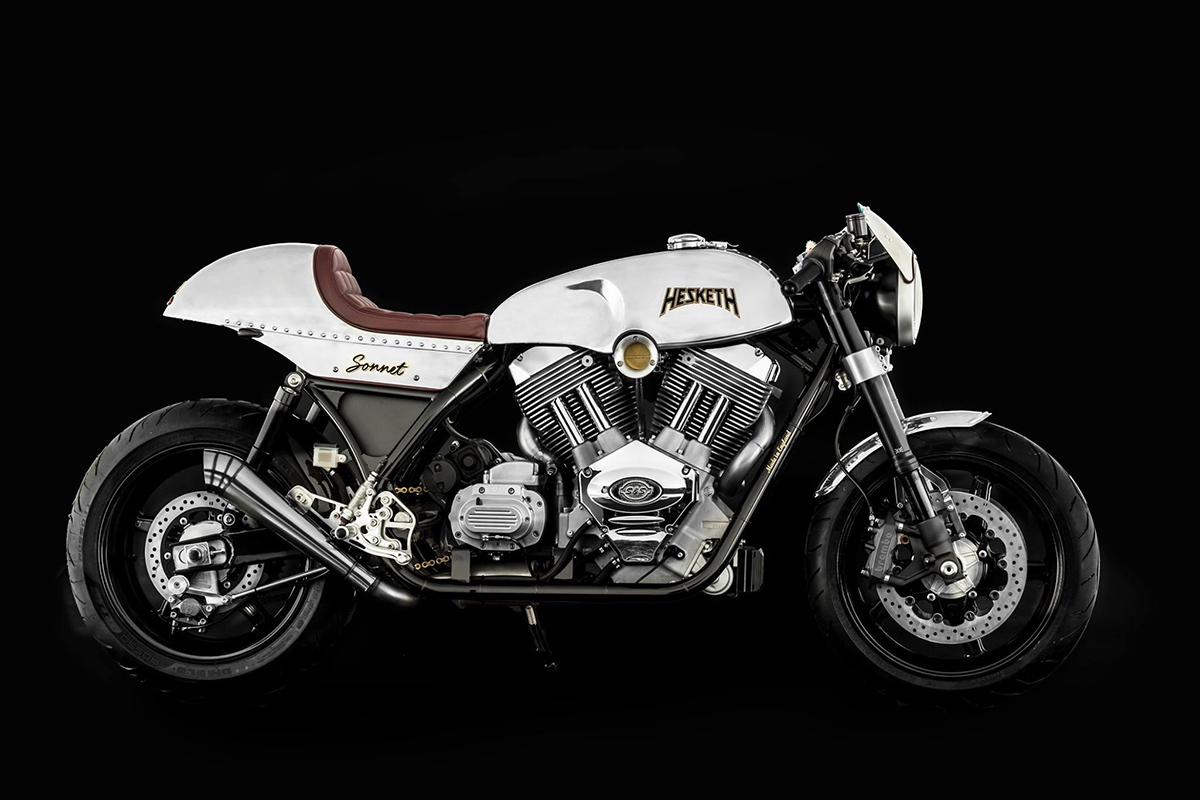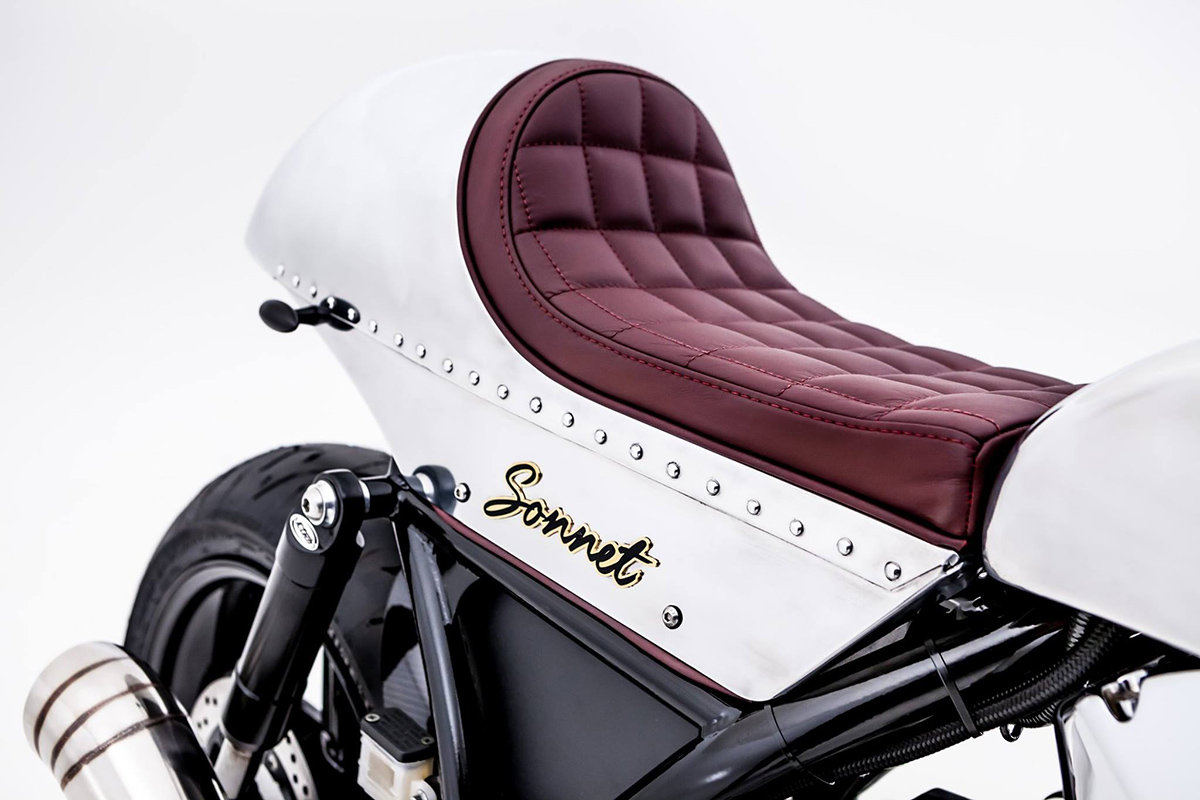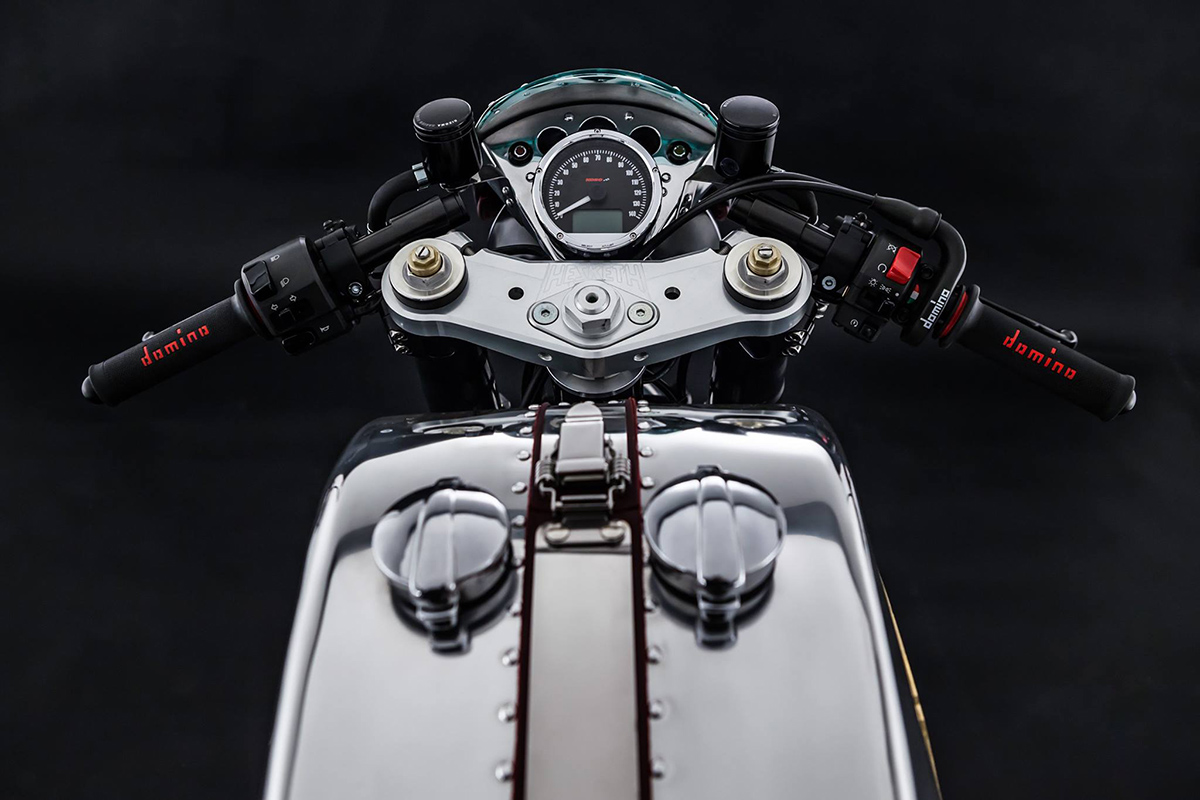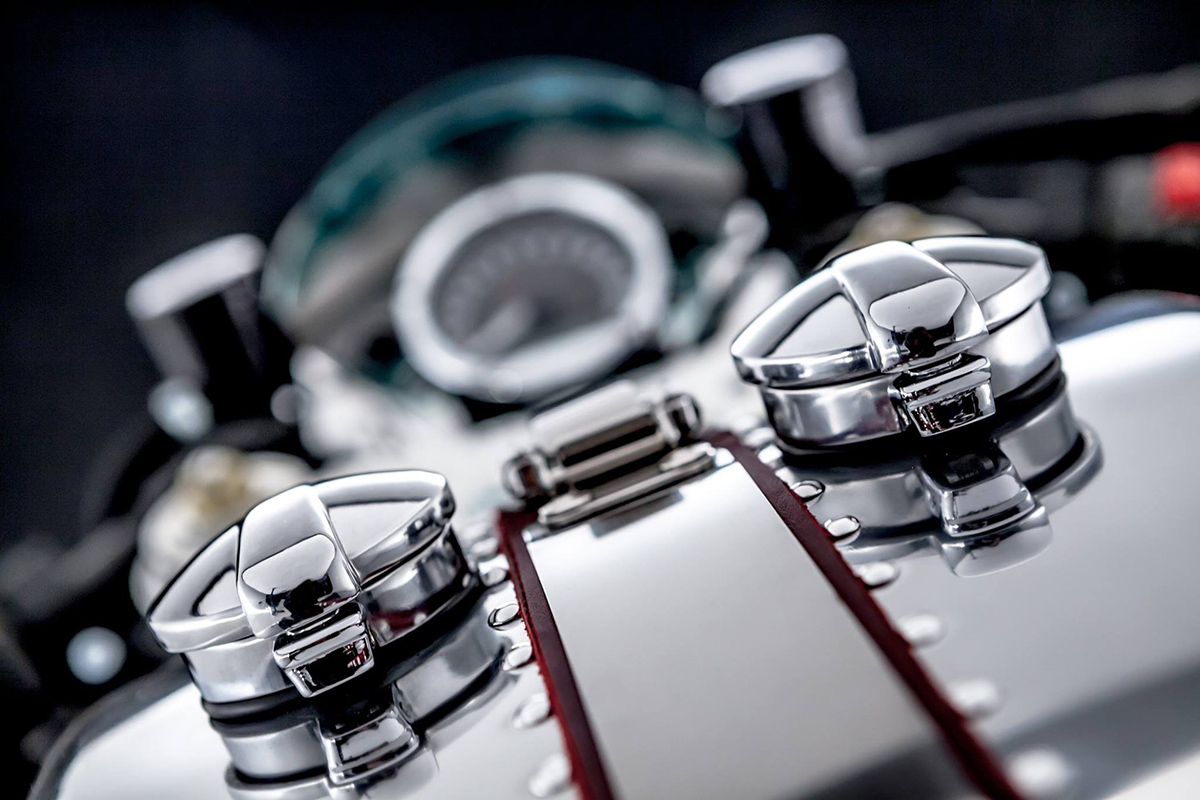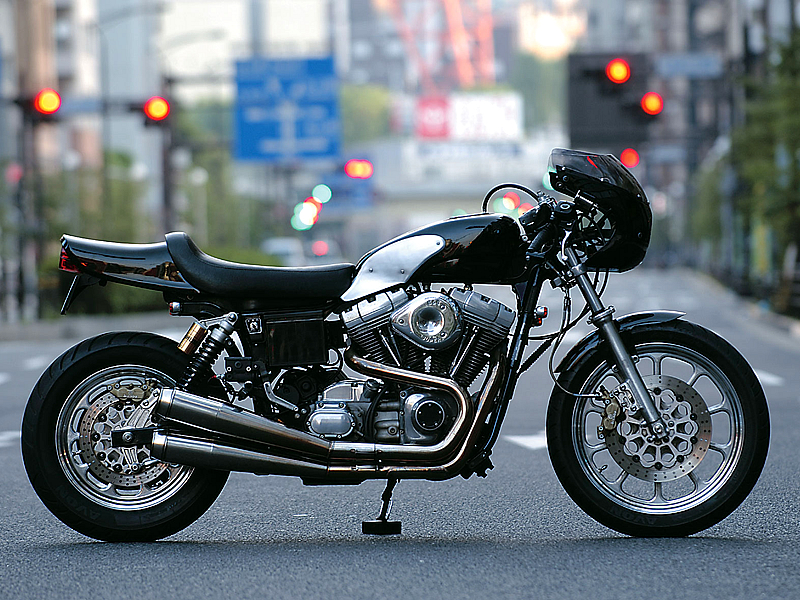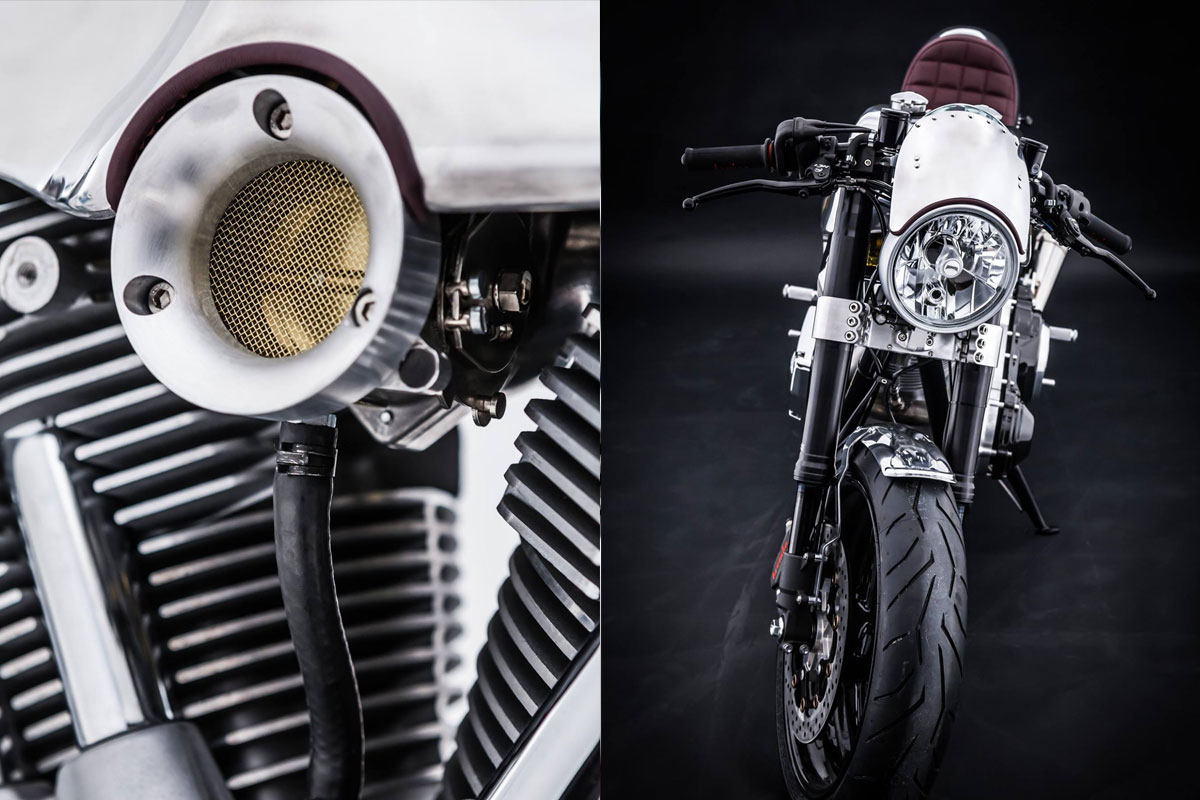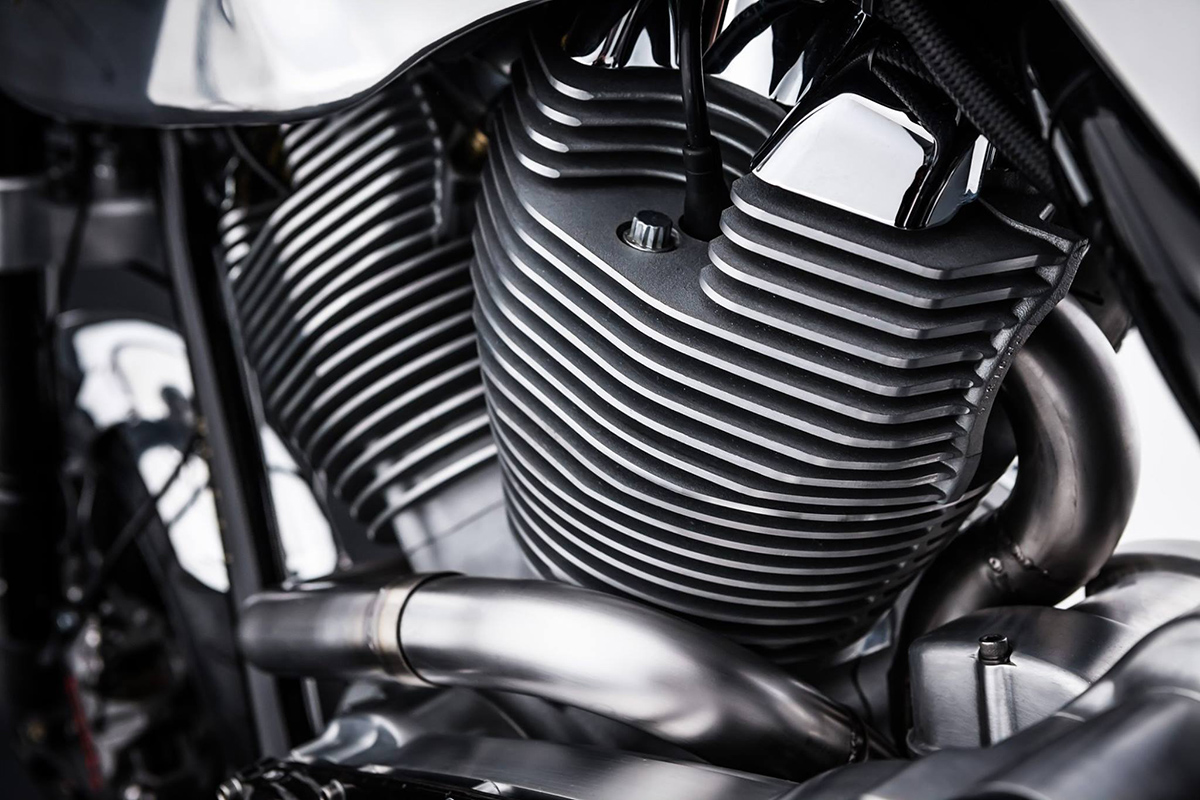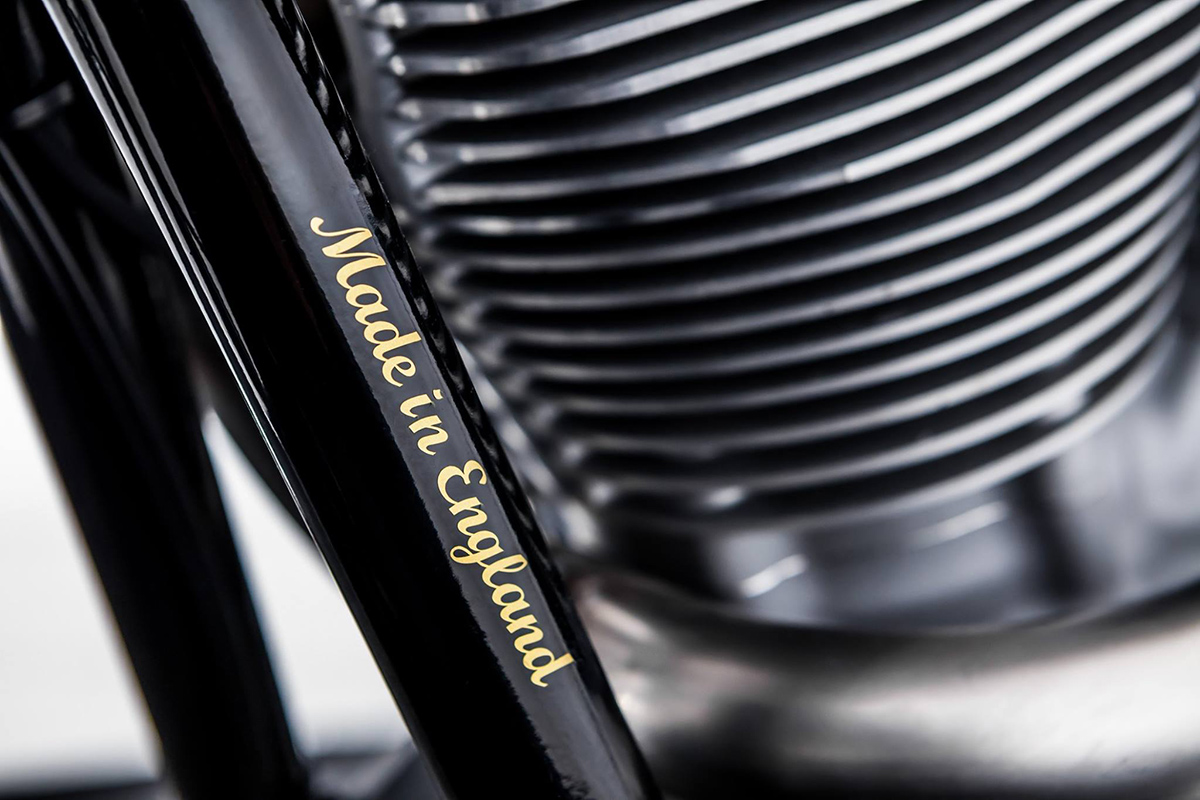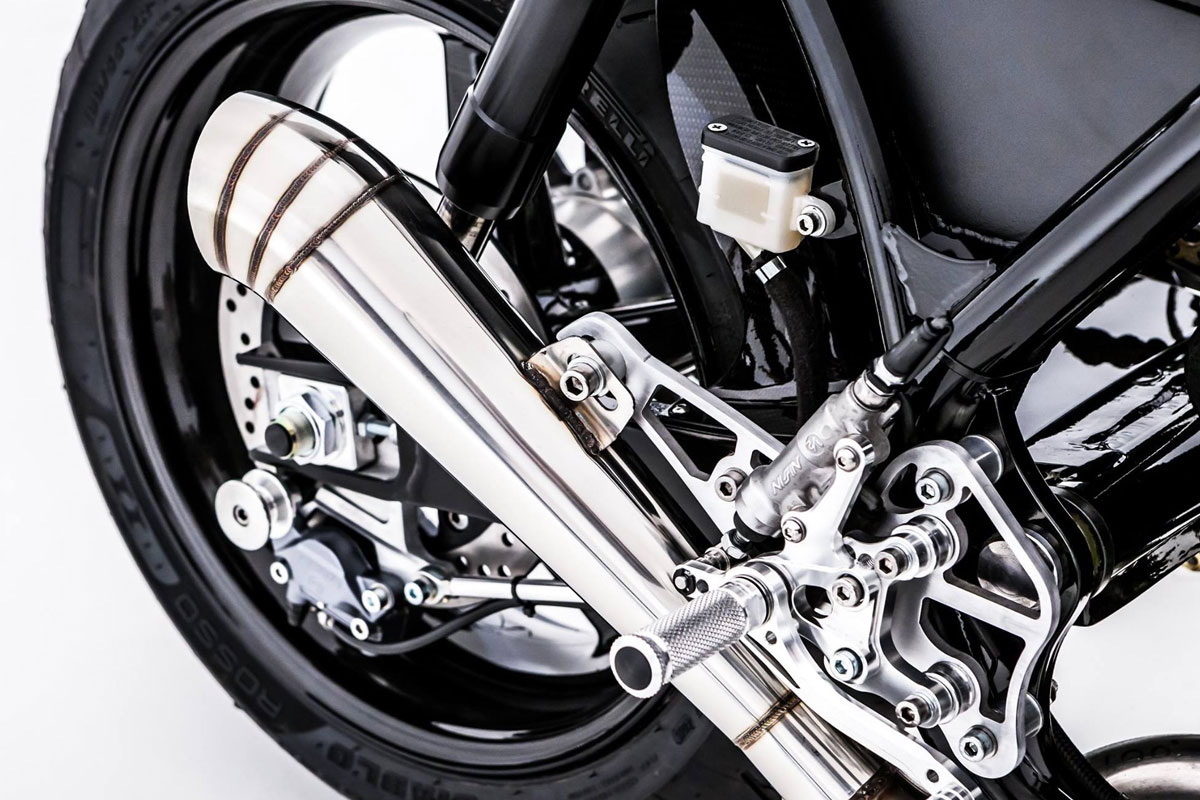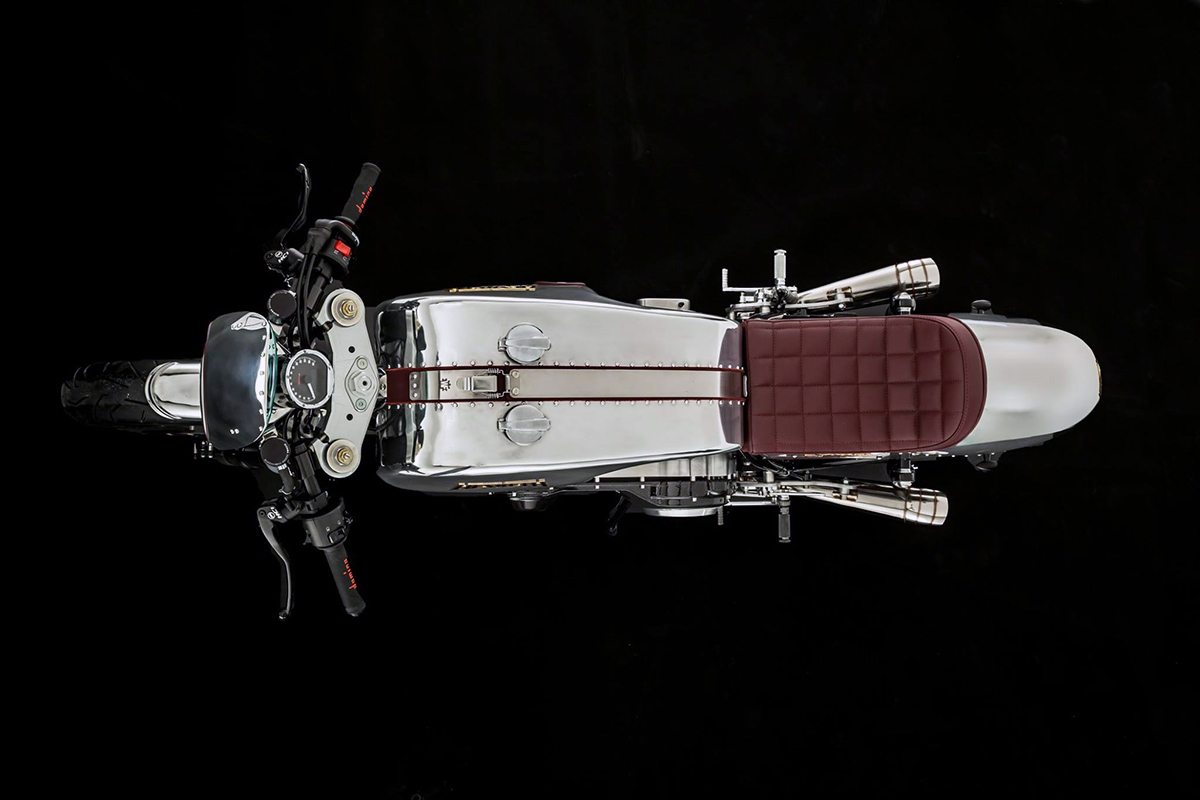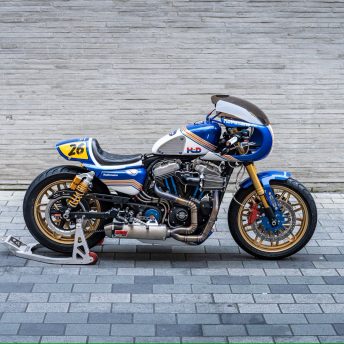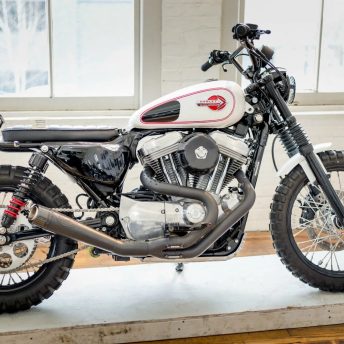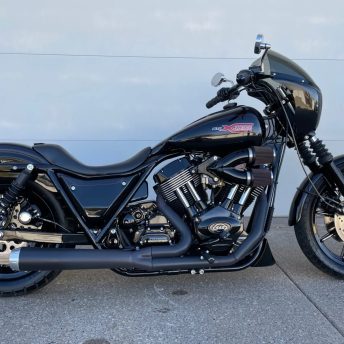The automotive industry has always been torrid, full of stories of receiverships and liquidations. Motorcycle manufacturing is no exception and many of the world’s current top players have experienced their fair share of problems getting to where they are today. Unfortunately, over the years many smaller motorcycle manufacturers have fallen by the wayside despite promising beginnings or innovative engineering. Occasionally, however, a brand is resurrected from the dead thanks to the work of ambitious individuals who see the value or historical significance in keeping a brand alive. Hesketh Motorcycles is such a brand and despite a shaky start it now has its sights set on success with the development of its latest cafe racer styled motorcycle, the Sonnet.
Hesketh Motorcycles was originally conceived in the 1980s out of a desire to revitalise Britain’s dwindling motorcycle industry. After the emergence of superior Japanese-made motorcycles in the ’60s and ’70s, many of the British marques had shut their doors or were on the verge of doing so. On the back of his escapades in F1 racing, Lord Thomas Alexander Fermor-Hesketh formed ‘Hesketh Motorcycles’. Hesketh Motorcycles went on to become the first British manufacturer to produce a four valves per cylinder engine with twin overhead camshafts in 1982. Unfortunately, the bikes were riddled with problems and the resulting bad press sent the company into receivership.
In 2010 the Hesketh name was reincarnated by a successful British mechanical engineer by the name of Paul Sleeman. Sleeman relaunched the brand with a streetfighter styled motorcycle named ‘The 24’ which had a limited production run of (you guessed it) 24 units. The 24 adopted the same v-twin engine configuration as the original Hesketh bikes (without the design flaws) and its success laid the foundation for the production of their latest motorcycle, the Cafe Racer styled ‘Sonnet’.
The Sonnet’s styling is unmistakably influenced by cafe racers of the sixties, but the similarities end there. This is a modern motorcycle in every sense, packing all the latest technology and components. At around $32,000USD you wouldn’t expect anything less. Only 100 Sonnets will be produced and the price tag associated with owning one makes it an exclusive item that’s aimed at the heavier pocketed riders amongst us.
The bikes beautiful, hand-beaten bodywork is a sight to behold. Using aircraft styled rivets to secure panels in place and polished to a mirror finish it oozes opulence befitting of its price tag. The single-seater wasp tail is kept clean thanks to discreet LED lighting and its quilted, the burgundy leather saddle is reminiscent of your grandparent’s prized Chesterfield lounge suite. Surprisingly, both of the twin Monza filler caps function, but be sure not to confuse them at the pump. One side serves as your fuel tank that extends under the seat to hold 13 litres, while the other holds the oil reserve for the dry-sump engine. A classic leather strap with a polished belt secures the tank in place and it’s been specially shaped to incorporate the bikes alloy velocity stack.
While the Sonnet is a beautiful motorcycle to behold it certainly won’t disappoint in the performance department. The Sonnets chrome-moly frame and British made KTR suspension package (USD forks and nitrogen filled shocks) promise exceptional handling especially when combined with the lavish Dymag carbon wheels, Avon 3D Ultra Sport tyres and Brembo brake package. Then there’s the engine. A beastly v-twin from S&S with an eye-watering capacity of 2,100cc. Sporting 3 camshafts, 2 valves per cylinder and a tuned 2-into-1-into-2 stainless exhaust system the engine produces a touch under 145bhp and a whopping 210Nm of torque making it the torquiest twin on the market. At 235kg it’s no featherweight, but with power like this on tap, a few extra kilos aren’t going to ruin all the fun.
Opulence is continued across all other aspects of the Sonnet’s design. Premiere Italian aftermarket parts manufacturer Rizoma were tasked with supplying the bikes lighting and fluid reservoirs. The clip-on handlebars wear classic GP styled Domino grips and the single digital speedometer hails from North American brand Koso. Starting the bike is done using a single push of the ignition button that is activated by a keyless proximity ignition fob and there’s an immobiliser for security.
